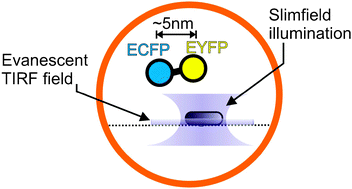Millisecond timescale slimfield imaging and automated quantification of single fluorescent protein molecules for use in probing complex biological processes
Abstract

* Corresponding authors
a
Clarendon Laboratory, Oxford Physics, Oxford University, Parks Road, Oxford, UK
E-mail:
m.leake1@physics.ox.ac.uk
Fax: +44 (0)1865 272400
Tel: +44 (0)1865 282559
b Oxford Centre for Integrative Systems Biology, Dept. of Biochemistry, Oxford University, South Parks Road, Oxford, UK

 Please wait while we load your content...
Something went wrong. Try again?
Please wait while we load your content...
Something went wrong. Try again?
 Fetching data from CrossRef.
Fetching data from CrossRef.
This may take some time to load.
Loading related content
